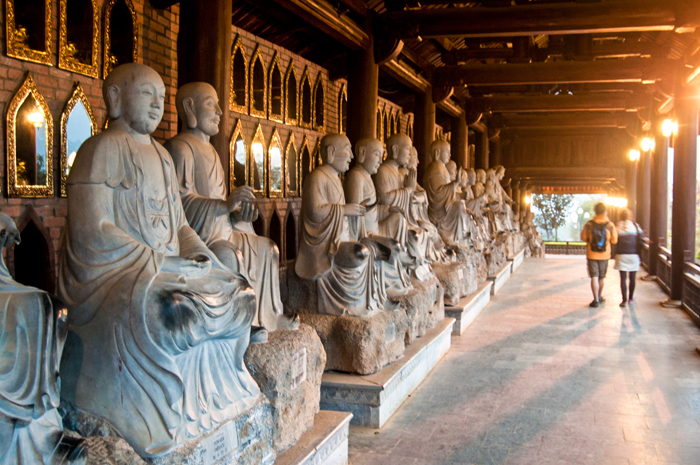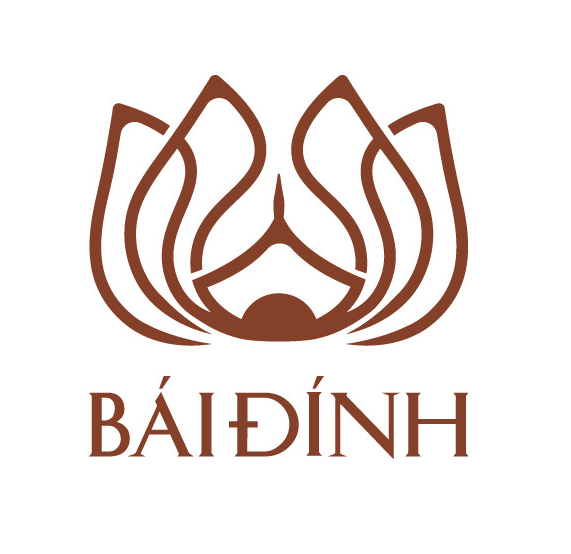Arhat Statue Corridor

Ladies and gentlemen, from the position of Tam Quan gate, look to the two sides, you will see 2 rows of arhat corridors. The corridor is designed entirely of wood with the amount of about 3,500m3 of round wood. Along the left and right corridors, there are 500 Arhat sauce phoenixes, each about 2.5m high and weighing about 4 tons, made of stone, crafted by artisans of Ninh Van stone village (Hoa Lu). Therefore, the corridor is also called Arhat Duong. Arhat Road consists of two rows, each row 117 compartments, 1700m long. set a record as the longest arhat corridor in Asia.
Arhats are disciples of Buddha Shakyamuni, they have not yet become Buddhas, so they are called Arhats. So you see, the Arhat path is only arranged from the three entrances to near the Dharma master's palace, this is also a symbolic path for the way to the Buddha realm. Each Arhat has its own name and meaning.
Do you know why the Arhats are worshiped in the corridors? Because in this position, they are often close, nurture and guide sentient beings. On this road, if we pay attention to the two sides, we see a lot of jackfruit trees planted. Why so? In Buddhism, jackfruit is Paramita. The Sino-Vietnamese sound is Paramita, which means "beyond the shore" (to the shore of enlightenment). The meaning of the jackfruit tree is great enlightenment, the peak of liberation. Therefore, jackfruit tree is a sacred tree, associated with Buddhism (jackfruit wood is used to make pagodas, make Buddha statues, jackfruit leaves are used to make offerings to the Buddha, etc.). In fact, jackfruit does not have a mere material element with twisted veins expressing art, higher, it is a manifestation of an estranged tree.
Here, we would like to invite you to visit the second point of the temple: The Buddha Shakyamuni Hall.
